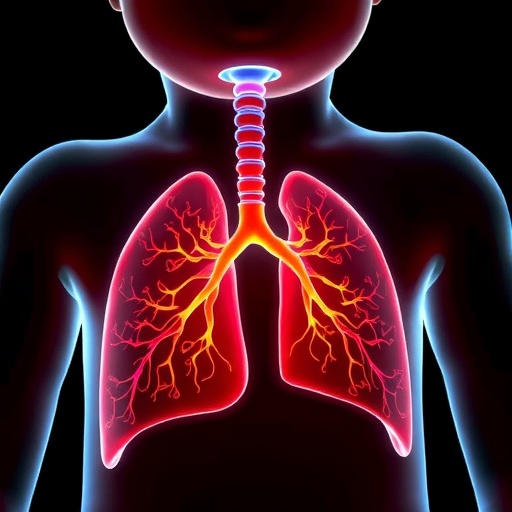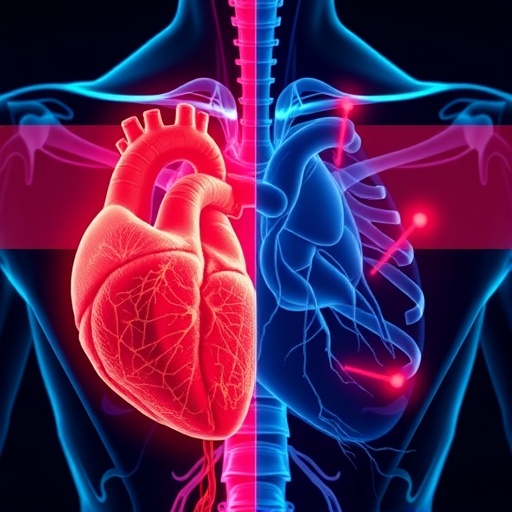Carbon Dioxide May Drive Lung Damage in COPD

A new Northwestern Medicine study is challenging long-held assumptions about chronic obstructive pulmonary disease (COPD), according to results published in The Journal of Clinical Investigation.
COPD, a leading cause of death and disability worldwide, is traditionally understood as a condition marked by irreversible airflow obstruction and lung tissue damage. However, investigators have now found that chronic hypercapnia — elevated levels of carbon dioxide (CO₂) in the blood — may actively reshape lung structures and worsen disease outcomes.
The new findings suggest that elevated carbon dioxide levels may not just be a consequence of the disease, but a key contributor to its progression, said Masahiko Shigemura, PhD, research assistant professor of Surgery in the Division of Thoracic Surgery, who was first and corresponding author of the study.
“Carbon dioxide has traditionally been viewed as simply a waste product of breathing,” Shigemura said. “Because of this, elevated CO₂ in the blood — what we call hypercapnia — has often been tolerated in patients with lung disease, as part of a clinical strategy known as permissive hypercapnia. Our group at Northwestern has been challenging that view.”

In a series of experiments using mice and human lung tissue, scientists exposed subjects to high CO₂ levels under normal oxygen and pH conditions. Even without signs of inflammation or tissue destruction, the lungs showed significant structural changes, according to the study. These included thickening of airway smooth muscle, increased extracellular matrix (ECM) deposition, and signs of vascular remodeling, all hallmarks of COPD.
These changes were not due to increased cell proliferation, but rather to hypertrophy, or enlargement, of existing cells. Lung fibroblasts exposed to high CO₂ also began to resemble myofibroblasts, a cell type associated with fibrosis and tissue stiffening. Genetic analysis revealed that CO₂ exposure triggered expression of ECM-related genes, including LTBP2, a known marker of myofibroblast activity.
To test the relevance of these findings in humans, scientists cultured precision-cut lung slices from healthy donors and patients with COPD under hypercapnic conditions. The COPD samples showed even more pronounced remodeling, with increased smooth muscle thickness and collagen deposition.
The study found that these CO₂-induced changes were at least partially reversible. Mice returned to normal air after CO₂ exposure showed reduced muscle thickening and ECM buildup, suggesting that therapeutic strategies aimed at lowering CO₂ levels — such as non-invasive ventilation — could help mitigate lung damage.
“Together, these findings highlight CO₂ not just as a by-product of breathing, but as an active driver of lung disease, one that could be targeted in future therapies,” Shigemura said.

The study adds weight to the growing recognition of CO₂ as a bioactive gas with signaling properties, rather than a passive byproduct of respiratory dysfunction.
The American Thoracic Society and the European Respiratory Society released clinical practice guidelines in 2019 and 2020 recommending the use of non-invasive ventilation in stable COPD patients with hypercapnia. Although this intervention is known to improve clinical outcomes, the underlying biological mechanisms remain incompletely understood. The findings provide mechanistic support for these therapeutic strategies, Shigemura said.
“One of the most surprising findings was the structural changes we saw in the pulmonary blood vessels. This suggests that hypercapnia might also play a role in the development of pulmonary hypertension, which wasn’t something we initially set out to study,” Shigemura said.
The study also holds implications for environmental determinants of health, Shigemura said.
“Although atmospheric CO₂ levels are far lower than those found in the human body, they are steadily climbing. Human activity is the main driver, but natural events such as volcanic eruptions and wildfires can also cause local spikes. This rising CO₂ doesn’t just fuel climate change — it may also carry long-term risks for human health,” Shigemura said. “Our work highlights that elevated CO₂ may be an underappreciated risk factor — one that affects not only patients with lung disease, but potentially people living in different environments.”
Ankit Bharat, MBBS, chief of Thoracic Surgery, the Harold L. and Margaret N. Method Professor of Surgery and director of the Canning Thoracic Institute, was senior author of the study.
The study was supported by the Department of Veterans Affairs (I01CX002350) and the National Institutes of Health (HL147070, HL173987, HL131745, HL145478, HL147290, HL147575, HL173940 and P01HL169188).
link






